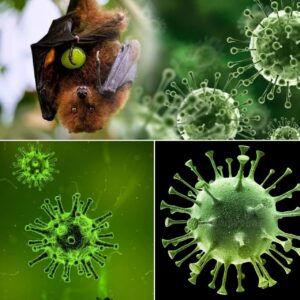
The deadly Nipah virus outbreak has spread in Kerala, India. Five people have been affected by this virus, out of which two have died.
In Kozhikode district, where the outbreak occurred, authorities have set up “containment zones” in the area and schools have been closed. 76 people who came in contact with the infected people are being closely monitored for symptoms of the disease.
The Nipah virus has now spread to Kerala four times. The year with the most fatal instances had five suspected cases and 18 laboratory-confirmed cases; 17 of the patients died.
The Paramyxoviridae family of RNA viruses includes the Nipah virus. The first human outbreak was detected in Malaysia in 1978 and resulted in 265 cases and 105 deaths. Since then, one or two outbreaks occur every year. More than half of the people who become infected die.
Apart from Bangladesh, most reports of the outbreak have also come in India, Malaysia, Singapore and the Philippines.
The proportion of asymptomatic Nipah virus infection varies from one outbreak to another and ranges from 17% to 45%. When the virus causes disease, the main effect is encephalitis (inflammation of the brain). Patients develop fevers and complain of intense headaches, and many will experience disorientation, drowsiness, and confusion. Some patients also develop chest infection.
There is no specific medicine to treat Nipah virus, so medical care is only “supportive”, i.e. treating individual symptoms and keeping the patient comfortable until he or she makes a full recovery.
It seems like some treatments have potential, at least in animal studies, but few studies have been done in humans. A small trial of a drug called ribavirin showed it could reduce deaths, but more studies need to be done.
A targeted therapy called monoclonal antibodies has proven effective in reducing deaths in green monkeys if given early in the course of Nipah virus infectionHowever, no trials have yet demonstrated how well these medications work in Nipah virus-infected patients.
Nevertheless, Indian authorities are purchasing monoclonal antibodies from Australia for use in the current outbreak.
There is no vaccine against Nipah virus, although an mRNA vaccine against the virus is being tested in humans.
How do people get infected?
Although there was no proof of person-to-person transmission during the initial outbreak in Malaysia, contact with pigs or working as a pig farmer was the main risk factor. The reason the pigs started dispersing the illness was unknown at the time.
We now know more about the virus and the dangers of human transmission than we did during the first outbreak. It is now generally acknowledged that fruit bats, notably the Indian flying fox, serve as the main hosts of the Nipah virus. The Nipah virus was first discovered in Kerala in bats.
Most infections are thought to come from contact with an infected animal, either the fruit-eating bats themselves or contact with intermediate animals such as pigs, as was the case when the outbreak was first detected in Malaysia. But there are interesting differences between the outbreaks. In Bangladesh, there is an association with drinking raw or fermented date juice.
In a Bangladeshi study, researchers used motion-sensor-infrared cameras to show that fruit bats frequently visited date palm trees where villages collected date sap for consumption.
Initially, it was thought that transmission of Nipah virus did not occur from person to person because no healthcare workers were infected during the large outbreak in Malaysia. Since then, healthcare workers have been reported to be vulnerable to infection, as was the case in this most recent outbreak, where one death was in a healthcare worker who administered care to a virus-infected person.
Deadly, but not easily transmitted
A study of about 248 Nipah virus infections conducted over several years in Bangladesh concluded that about a third were contracted from another human. The researchers estimated that the R value – the number of people an infected person is likely to spread the disease to – is about 0.33indicating that the disease would probably not spread very far from its animal source.
Although Nipah virus causes a deadly infection, there is no evidence that it is likely to spread widely outside areas where people or their livestock come into contact with infected bats. However, the Nipah virus outbreak may be another indication that habitat loss as a result of human intrusion forces greater contact between humans and animals thereby increasing the risk of transmission from animals to humans.
Even if the R value is low, should infected animals be moved to large cities, increased population density will increase the risk of person-to-person transmission which could lead to the evolution of the virus to become more human infectious and trigger a new pandemic. Can enable to do.